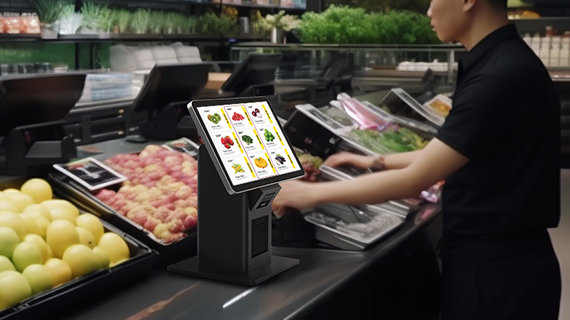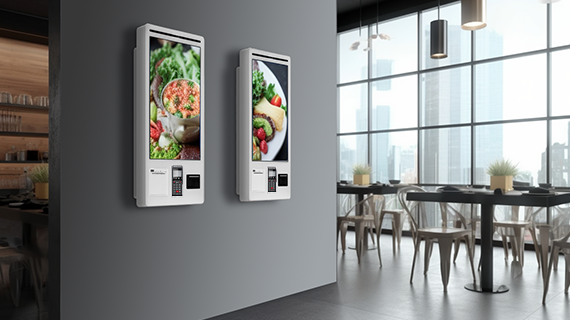About The Self-service Kiosk
A self-service kiosk is an interactive self-service device that helps users do informational or transactional tasks to simplify their daily routines.
It is also a cost-effective way to reduce labor costs and improve customer experience. In many places nowadays, such as restaurants, convenience stores, and theaters, customers can complete self-service activities independently without having to wait in line at the counter for employee assistance, allowing employees to focus on providing more value to customers and performing other tasks.
By far, most service-oriented industries use self-service terminals. They effectively automate processes, provide information, and interact with customers to deliver an advanced customer experience.

We Need The Self-service Kiosk
Self-service kiosks can help businesses quickly collect valuable data. self-service kiosks can collect data about customer behavior, preferences, and buying patterns. This information can be used to better understand customer needs, personalize products for customers, and make data-driven business decisions.
Self-service kiosks offer convenience and flexibility to customers, as they can choose the right self-service at their own pace and needs. Users can independently browse products, place orders, check in for appointments, or access information.
With self-service terminals, customers can enter their orders, thus reducing the possibility of miscommunication or misrepresentation of information that sometimes occurs when relying on human interaction. This improves order accuracy and increases customer satisfaction.
Self-service Kiosks McDonald
McDonald’s began rolling out self-service kiosks in restaurants across the UK in 2015 and are now in the majority of their stores across the UK, a technology that has enabled them to revolutionize the customer experience and significantly reduce wait times, as well as increase the number of orders that can be processed by the restaurant.
In 2019, McDonald’s stores upgraded with a small, new wall-mounted version of the self-service kiosk. It has a smaller screen and overall footprint, which facilitates the restaurant’s ability to use less space to improve service for customers to their satisfaction.

Self-service Kiosks Are Inclusive
Technology can break down many existing barriers, and self-service kiosks offer an intuitive and user-friendly way to access information and provide services. With further design adjustments, they can be adapted to suit the needs of different people, offering different options to meet those different needs.
Even the visually impaired or those with limited mobility can complete a range of operations independently at a self-service kiosk on their own, without having to wait for staff assistance.
Customers may come from different countries, so it’s costly for employees to learn multiple languages to better serve them. Self-service kiosks, on the other hand, can provide multiple languages for tourists to choose from. Through the switching of language interfaces, tourists can effortlessly use their familiar language to carry out various services, enhance the inclusiveness of tourists, immigrants, and other non-native speakers, and provide choices of services that are difficult to communicate verbally due to language barriers.
Self-service Kiosks Do Not Replace Employees
Concerns that the proliferation of self-service kiosks will replace human employees should not be overly worrying. Self-service kiosks simply take over repetitive tasks that would otherwise be tedious for employees, allowing them to take time out to do more detailed work.
Advanced technology can not replace the staff to complete the communication work with customers, involving humanistic care and emotional interaction; self-service kiosks can not provide more. In some environments, employees will still need to help some customers use the kiosk.
The best self-service solution is to enhance collaboration between employees and AI to provide quality service to customers together, not replace them.

